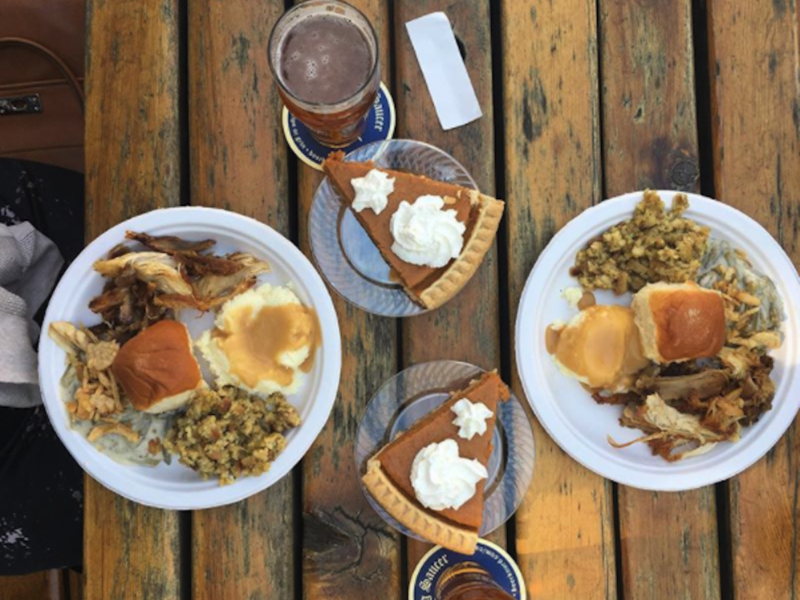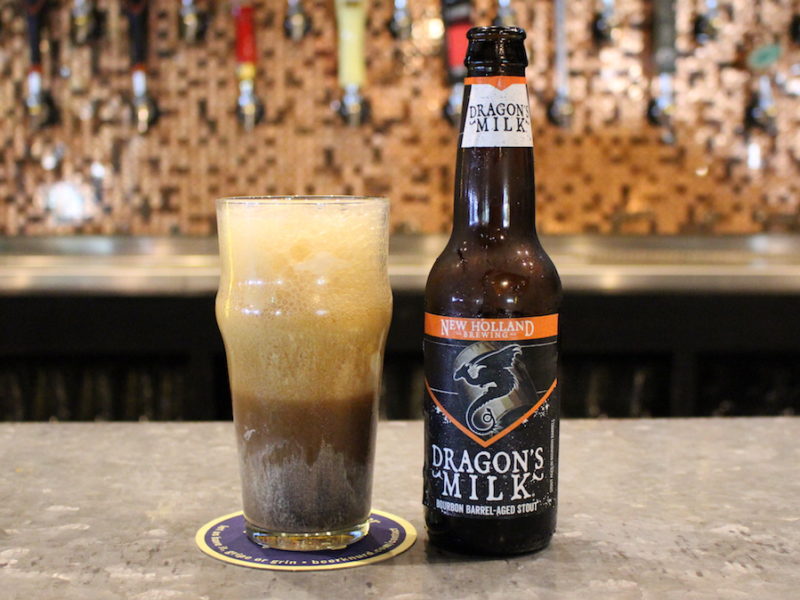There’s no question that Americans love beer. But, like the other great beer-producing regions of the world (Germany, Belgium, the UK), can the United States stake a claim to a signature beer style?
On the one hand, ours is a young nation, and our brewing traditions have been imported from other places. On the other hand, Americans revere pioneers and innovators, and our brewers love to experiment. We love to take things that already kick ass and figure out how to make them even more kickass.
This question of which beer best captures the spirit of American ingenuity and adventure is one that generates endless debate, but there’s one thing for certain: that debate is probably not going to rage over bottles of cream ale, but in between pints of IPA.
IPA: The American Choice?
The craft beer era assures as much. If any beer qualifies as a popular choice among American drinkers right now, it’s the IPA. Specifically, IPAs that melt your palate with piney, grapefruity, fennel-like, even funky intensity and then salve the scalded flesh with a light malty aftertaste. What’s American here is that love of extreme experiences and controlled danger.
But you may ask yourself “how did we get to the point where we celebrate IPA Week and IPA Day (August 4)?” And you may ask yourself “how did an English beer style whose origins are questioned and debated become so associated with all things USA?” (Read some theories for yourself.)
Yes, you may find yourself feeling like David Byrne asking “how did I get here?”
Invention of the Cascade Hop
And one of the best answers would be: agribusiness. Specifically, efforts by the United States Department of Agriculture’s efforts to breed a hop variety that would prove resistant to crop-destroying outbreaks of downy mildew.
In 1971, after almost 20 years of testing, a USDA research team in Corvallis, Oregon, cracked this genetic code, and for the first time successfully bred the Cascade hop. Five years later, Sonoma’s New Albion Brewing Company, generally accepted to be the first true craft brewery in the United States, produced batch No. 1 of its New Albion Ale, the first pale ale to showcase both the unique aroma and the spice and citrus zing of the Cascade hop.
Other brewers in Northern California soon followed suit: Anchor Brewing with its Liberty Ale and Sierra Nevada with its signature Pale Ale. Cascade hops have since gone on to become the most widely used hop variety in American-brewed beers. And Cascade has maintained its popularity even as new, indigenously American hop varieties have caught the fancy of hop farmers and brewers alike.
The Other C Hops
Centennial hops share much of the Cascade’s lineage (a seed blend including English Fuggle and Brewers Gold hops), but its flowers contain higher concentrations of alpha acids. These chemical compounds are chiefly responsible for making IPAs and APAs (American pale ales) taste bitter. Chinook and Citra hops followed in the 1980s and 2000s, respectively, and both continue to up the wattage as far as alpha acids go, though each has its own distinct profile. For example, Citra hops are lower in cohumulone, the alpha acid responsible for “harsh bitterness.” The hoppiness of IPAs brewed with Citra tends to inspire comparisons to mellow fruits such as melons and berries. Meanwhile, double IPAs are entering the rotation in ever-larger numbers, promising even more hop transcendence, as well as imperial stout-like levels of gravity.
If we accept that the craft brewing revolution was at least in part a reaction to the increasing insipid-ification of American beer by major commercial brewers, then the popularity of IPAs makes sense. Nothing could be more opposed to the bland profile of the “American light lager” than the aggressiveness, acridity and relatively high ABV (between 5.5% and 7.5%) of the American IPA. But not all IPAs, much less all hoppy beers, have this punk rock attitude. In fact, the term IPA is rather loosely applied these days and, ironically enough, finds itself threatened with dilution.
The Bitterness Battle
Isn’t a “black IPA” an oxymoron? How can a dark ale, no matter how bitter, also be pale? Some industry observers have even gone so far as to lament the “arms race mentality” of American craft brewers when it comes to bitter beers. Still other commentators have rallied to the defense of IPAs’ trendiness, pointing out that “[s]aying you don’t like ‘hoppy’ beer nowadays is like saying you don’t like ‘grape-y’ wine.” And still others have cited research that American tastes are changing at a molecular level, and that, as a nation, we are struggling against our own tongues, which have become desensitized by our modern diets.
Whatever the case, not every IPA is concocted so as to rain ruin down on your taste buds. Nor are IPAs purely for the competitive eating, “ghost pepper challenge” crowd. American IPAs can also be appreciated for their nuance and complexity. The basic recipe for any beer is pretty simple after all: water, grain, yeast. Hopping, however, opens up all sorts of creative possibilities for brewers. Not only can brewers mix and match hop varieties; they can also significantly alter the final product by controlling when and how hops are added. As long as Americans like to push boundaries, hops and bitterness will play a prominent role in defining our beer. As beer expert Joanna Carpenter notes, “[t]here’s definitely still an exploratory sense” to our fascination with IPAs.
The Future of the American IPA
So as the days go by, you can be sure that American IPAs won’t be same as they ever were. Some may continue to become more and more hop-loaded while others may look focus on achieving a perfect balance. Regardless, you know that American ingenuity will win out in the end and we’ll be able to enjoy many a kickass American-made beer!
What’s the best IPA you’ve ever tasted? Which hops do you look for when you’re reading an IPA label? Do you prefer a balanced IPA or one whose bitterness that can be measured on the Richter scale? How are you planning on commemorating IPA Day this August 4? Knurd-out with us in the comments below and be sure to visit your neighborhood Flying Saucer to find out how we’re celebrating IPA Week.








